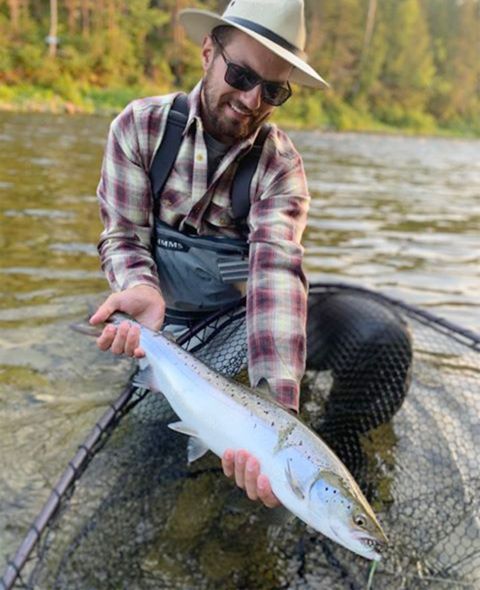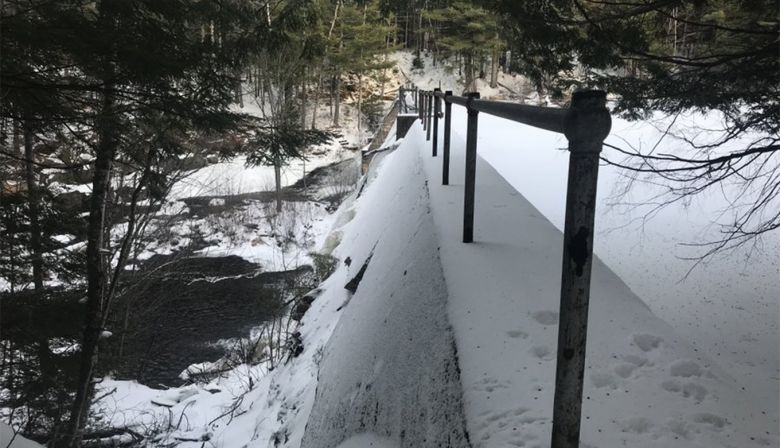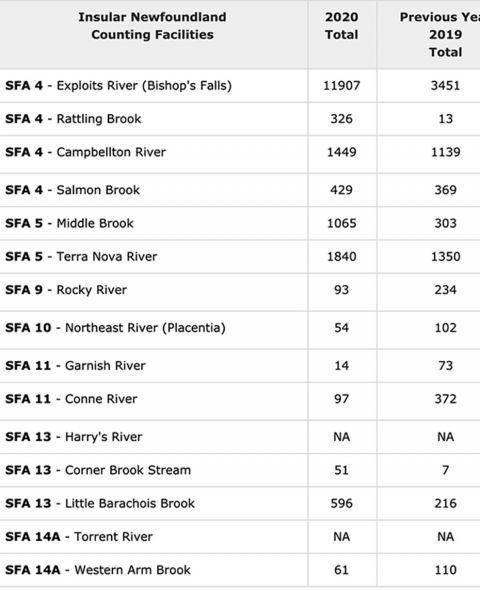Rivière Matapedia River
Angling success continues to be encouraging with large salmon/ (20lb +) fish being landed and released. To July 12th for the season, 433 salmon have been reported landed including 355 large salmon released and 78 grilse harvested.
Last season to date, 444 fish have been landed (329 released and 111 grilse harvested). In 2018 to date, 293 salmon were reported released and 156 grilse had been reported landed.
À ce jour, le succès de pêche continue d’être encourageant, au 12 juillet 433 prises ont été déclarées, dont 355 grands saumons relâchés et la récolte de 78 madeleineaux.
La saison dernière à pareille date, 444 prises furent déclarées (329 grands saumons relâchés et 111 madeleineaux récoltés). En 2018 à ce jour, 293 saumons fut relâchés et 156 madeleineaux fut récoltés.
Rivière Matane River
As of July13th, 1,276 fish (943 salmon and 333 grilse) have migrated through the fishway.
To July 15th 2019, 678 salmon and 219 grilse had been counted for total of 897. To July 17, 2018, 589 salmon and 222 grilse had been counted for the season. In regard to fish landed by anglers to date in 2020, the SOGERM is reporting a total of 158 fish (100 salmon and 13 grilse released, 45 grilse harvested).
To July 15, 2019, 107 fish (87 salmon and 4 grilse released, 16 grilse harvested) had been reported landed.
Au 13 juillet, 1 276 poissons (943 saumons et 333 madeleineaux) furent dénombrés dans la passe migratoire.
Au 15 juillet 2019, 678 saumons et 219 madeleineaux avaient été dénombrés pour un total de 897. Au 17 juillet 2018, 589 saumons et 222 madeleineaux avaient été dénombrés pour la saison. En ce qui concerne les prises à ce jour en 2020, la SOGERM fait rapport d’un total de 158 poissons (100 saumons et 13 madeleineaux relâchés, 45 madeleineaux récoltés).
Au 15 juillet 2019, 107 prises furent déclarées (87 saumons et 4 madeleineaux relâchés, 16 madeleineaux récoltés).

























